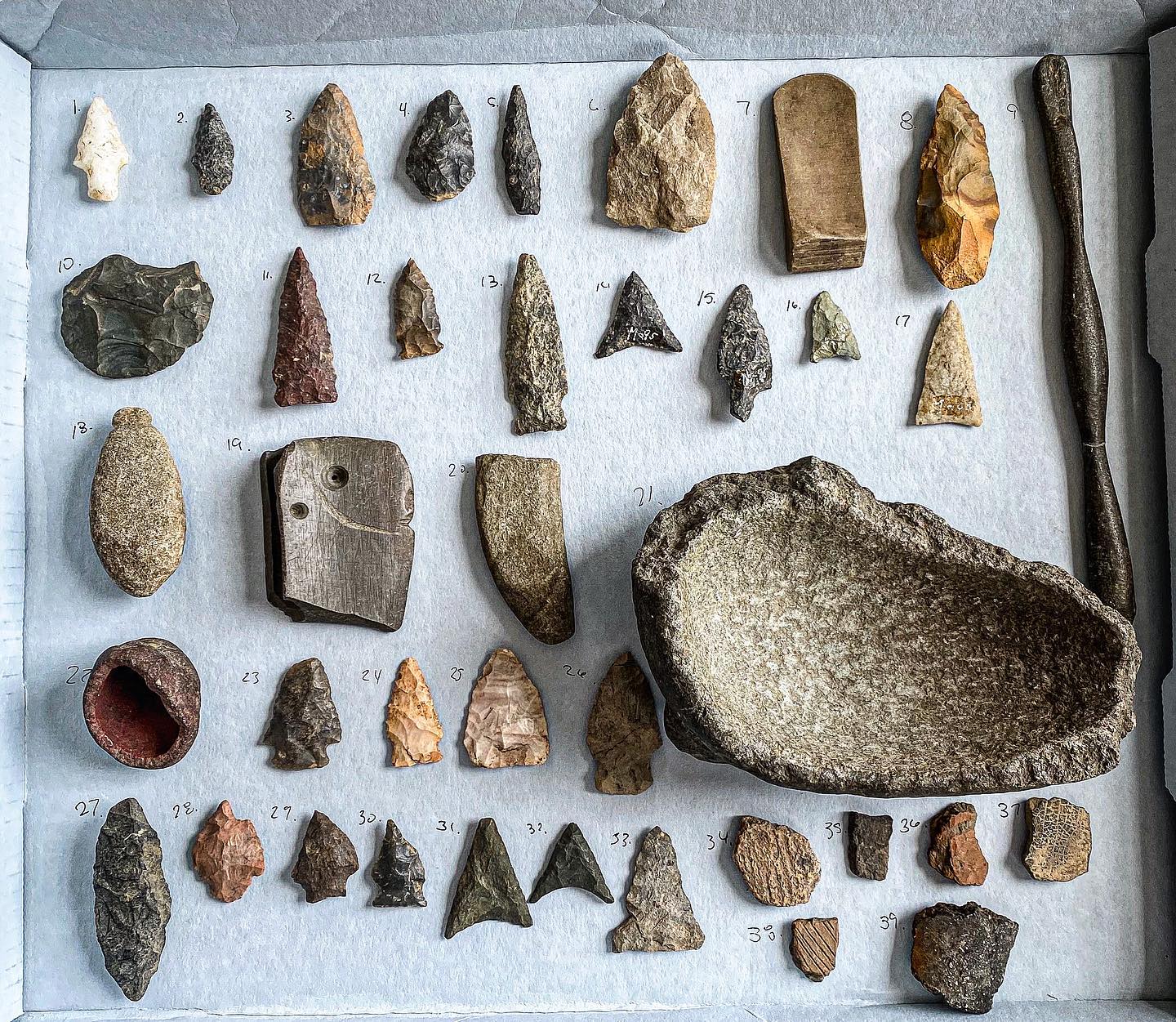For upwards of 10,000 years before the first English settlers inhabited the area presently known as Sudbury, Massachusetts, the Nipmuc, Pawtucket and Massachusett peoples returned to the Musketaquid Valley seasonally to fish its waters and hunt its forests. They made projectile points from stone to fashion spears, and later arrows, for hunting and constructed weirs to catch fish in the rivers.
Musketaquid, an Algonquian word meaning “grassy plain” or “place where the water flows through the grasses,” refers to the area along what are presently known as the Sudbury, Assabet, and Concord Rivers. By the early 17th century English settlers began to occupy the region, attracted by its fertile land, abundant waters, and plentiful open space.
Having received a land grant of four acres on the east side of the Sudbury River in the new settlement of Sudbury (an area that would become present-day Wayland), Edmund Rice (1594-1663) is believed to have emigrated from England with his family around 1638. A yeoman farmer of humble background, Rice soon rose to prominence as a respected community leader and eventually became the largest landowner in town.
Three centuries later, many of Rice’s descendants still called the Musketaquid Valley “home.” Harry C. Rice (1903-1978) lived on the family farm on Water Row, as had his father, Charles. Among Harry’s many interests was a love of animals; there he operated Broadmeadow Stable and provided space for the initial establishment of the Buddy Dog Humane Society.
One day while digging a new cesspool on the farm, Harry uncovered a sizable collection of stone tools including roughly chipped axes, pestles, gouge bits, and pounding stones, all of which would have been used by the Indigenous peoples whose ancestral lands the Rice family farm was built upon. Following this discovery, Harry worked with archaeologists from Harvard University, as well as the Massachusetts Archaeology Society, which conducted an excavation nearby, to document and learn more about his findings.
Harry wished to share his interest in archaeology with Sudbury’s youth and stipulated that the collection of 450+ Native American objects found on his property be left to the Sudbury Historical Society. He also bequeathed a considerable gift to the Town to develop a Sudbury Museum. Upon his death in November 1978, the Board of Selectmen established the Rice Museum Fund which, in accordance with Harry’s will, was to be invested and reinvested until the fund was substantial enough, “to build a suitable, fireproof museum building in which can be properly displayed the artifacts, materials and programs which are appropriate to the study of American History, and in particular the history of New England and Sudbury–including American Indian history.”
Nearly four decades later, the Town and the Historical Society came together to make Harry’s wishes a reality. Stabilization of the municipally-owned c. 1705 Loring Parsonage, supported in part with a Freedom’s Way National Heritage Area Partnership Grant, began in 2016 and was followed by a complete reconstruction of its interior. Despite numerous setbacks due to the coronavirus pandemic, the Sudbury History Center opened its doors to the public in the summer of 2021.
Inside, the Jonathan Baggott Gallery houses a permanent exhibit which leads the visitor through the historical timeline of the town we call Sudbury. Beginning with the natural landscape and first inhabitants, it continues through colonial settlement, growth and expansion, and into modern times. Items from the Harry C. Rice Collection, including various types of projectile points, potsherds, and woodworking tools, are showcased
in a revamped Native American display which features information about the New-England (Woodland) Algonquian tribes and, more specifically, the Nipmuc people whose ancestral lands include modern day Sudbury.
To learn more about the Nipmuc and Massachusett peoples living throughout Massachusetts today, visit the Ohketeau Cultural Center’s and the Massachusett Tribe at Ponkapoag’s websites.
Image courtesy of the Sudbury Historical Society

